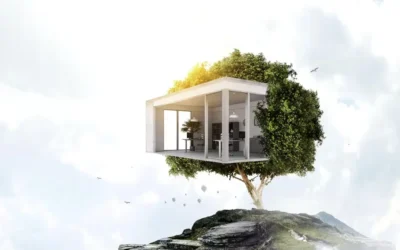Exploring Different Types of Rough Carpentry Techniques

h carpentry is a fundamental aspect of construction that involves the initial framing and structural work of a building project. It lays the foundation for the entire construction process and ensures the stability and integrity of the structure.
Read more to learn about the various rough carpentry techniques commonly used in the industry.
Platform Framing
Platform framing, or stick framing, is one of the most prevalent techniques in residential and light commercial construction. It involves building the structure floor by floor, starting with the foundation and progressing upward. The framework consists of individual wall and floor systems that are assembled and then connected to create a sturdy framework.
Balloon Framing
Balloon framing has been a popular technique from the late 19th century until the 20th century. Unlike platform framing, where the constructors build each floor separately, balloon framing constructs the entire structure in one continuous framework. This method utilizes long, continuous studs that run from the foundation to the roof, eliminating the need for horizontal floor joists.
Timber Framing
Timber framing is a traditional technique that utilizes large wooden beams and posts to create the primary framework of a structure. This method dates back centuries and is still in use in modern construction, particularly for custom homes or structures aiming for a rustic aesthetic. Carpenters commonly use mortise-and-tenon or dovetail joints to join timber frames, showcasing their skill.
Truss Construction
Trusses are prefabricated structural elements supporting roofs, floors, and ceilings. They consist of triangular frameworks made from wood or metal, and their design allows for efficient load distribution.
Truss construction is highly efficient and widely used in residential and commercial buildings to create open spans without interior load-bearing walls.
Post and Beam Construction
Post and beam construction employs vertical posts and horizontal beams to create the framework of a structure. This technique offers flexibility in design and allows for large, open interiors with minimal obstruction. You can see it in barns, pavilions, and upscale homes when you desire aesthetic appeal and an open concept.
Shear Wall Construction
Shear walls resist lateral forces such as wind or seismic activity. In this technique, vertical walls made from plywood or oriented strand board (OSB) are strategically placed within the structure to provide additional rigidity and stability. Shear wall construction is crucial in regions prone to earthquakes or strong winds, ensuring the safety and durability of the building.
Insulated Concrete Forms (ICF)
Insulated Concrete Forms (ICF) are a modern technique that combines rough carpentry with energy efficiency. It involves using interlocking foam panels or blocks to create the formwork for concrete walls. These forms are then filled with concrete, creating a solid and insulated wall system.
ICF offers excellent thermal insulation, soundproofing, and durability. Commercial construction uses ICF for projects that prioritize energy efficiency and sustainability.
Ready to take your rough carpentry projects to the next level? Partner with Curtis Partition today and experience the expertise and craftsmanship that will transform your construction vision into a reality.
Whether you’re looking for top-notch platform framing, timber framing, truss construction, or innovative techniques like Insulated Concrete Forms (ICF), our team is ready to deliver exceptional results. Contact us now to discuss your project and discover how we can elevate your rough carpentry to new heights.
Related Articles
The Environmental Impact of Prefabricated Construction: A Greener Approach
The construction industry is a major contributor to global carbon emissions and resource consumption, making sustainable practices more important than ever. One of the most promising solutions is prefabrication, which not only improves efficiency but also reduces...
Soundproof Drywall: Enhancing Acoustics in Commercial Buildings
In open office layouts, shared workspaces, and high-traffic commercial areas, excess noise can lead to distractions, reduced productivity, and even stress. For companies, poor acoustics can impact client interactions and employee satisfaction, while in industries like...
The Benefits of Prefabrication for Large-Scale Construction Projects
In recent years, prefabrication has become a cornerstone of modern construction, particularly in large-scale projects. This method, which involves assembling components of a structure off-site before transporting them for final installation, offers several advantages...



